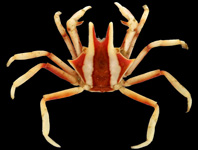Abstract
The Brazilian hylid genus Bokermannohyla Faivovich, Haddad, Garcia, Frost, Campbell & Wheeler, 2005 is currently composed of four (B. circumdata, B. claresignata, B. martinsi, and B. pseudopseudis) species groups (Faivovich et al. 2005). To date, the Bokermannohyla martinsi species group comprises only three species (Faivovich et al. 2009): B. martinsi (Bokermann, 1964), B. langei (Bokermann, 1965), and B. juiju Faivovich, Lugli, Lourenço & Haddad, 2009, whose advertisement calls remain unknown to science. Bokermannohyla martinsi is a narrowly distributed hylid frog species endemic to the southernmost portion of the Espinhaço range, known as Quadrilátero Ferrífero (QF). Located in the state of Minas Gerais, southeastern Brazil, the QF is considered an area of “special biological importance” (Drummond et al. 2005). Notwithstanding, because QF is one of the most important iron-ore mining districts in the world (Spier et al. 2003), it has increasingly been target of anthropogenic threats, being one of the most endangered Brazilian landscapes (Jacobi et al. 2007; Jacobi & Carmo, 2008). Herein, we describe for the first time the advertisement call of a member of B. martinsi group, B. martinsi.

